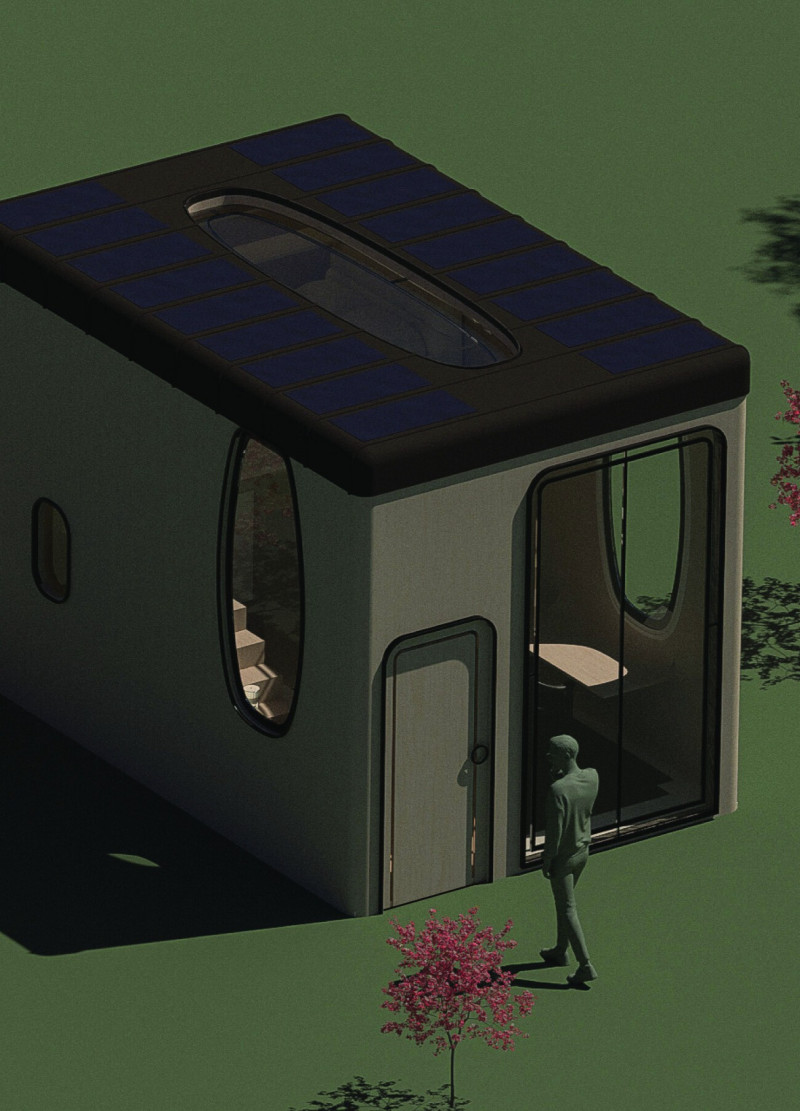5 key facts about this project
The building's primary function is to serve as a multipurpose space, catering to various activities that promote both individual and communal use. This adaptability is evident in the layout, which is designed to facilitate fluid movement between different areas, ensuring that users can easily transition from one function to another. This design approach not only maximizes usability but also fosters interaction among occupants, enhancing the overall experience within the space.
Critical to the project’s success is the careful selection of materials, which reflect both a commitment to environmental sustainability and an appreciation for local craftsmanship. The use of concrete as the primary structural material provides durability and versatility, while expansive glass facades allow for abundant natural light, diminishing the need for artificial lighting and enhancing visual connections to the outside. Complementing these materials, timber elements introduce warmth and texture, creating an inviting atmosphere that balances the more industrial aspects of concrete and glass. This combination of materials promotes a dialogue between natural and built environments, contributing to a sense of harmony in the design.
One of the standout features of the project is its incorporation of green spaces. The architectural design includes strategically placed gardens and outdoor terraces that not only enhance the aesthetic appeal but also serve functional purposes, such as providing areas for relaxation and social interaction. This focus on biophilic design acknowledges the importance of nature in urban settings, significantly improving the well-being of the occupants. The careful consideration of landscape features reflects a broader understanding of ecological systems and their relevance to architectural design, providing both a serene retreat and a vibrant community gathering spot.
The project's unique design approaches are noteworthy in their ability to respond to the local climate and culture. The orientation of the building has been optimized to maximize natural ventilation and sunlight, reducing energy consumption and enhancing user comfort. Moreover, the architectural design thoughtfully integrates elements that are inspired by regional traditions, ensuring that the structure resonates with the local community. This sensitivity to context not only enhances the project’s relevance but also establishes a connection between the new and the existing urban fabric.
In essence, this architectural project embodies a nuanced understanding of its purpose and potential impact on its surroundings. It serves as a model for community-focused design while demonstrating effective use of materials and innovative design strategies. By prioritizing functionality and user experience, the project successfully creates a welcoming environment that encourages interaction and engagement.
For those interested in a deeper examination of this architectural endeavor, exploring the intricacies of the project presentation, including architectural plans, architectural sections, and architectural designs, can provide valuable insights into the design intentions and execution. This analysis captures the essence of a project that stands as a testament to thoughtful architecture and design in response to both human and environmental needs.


























